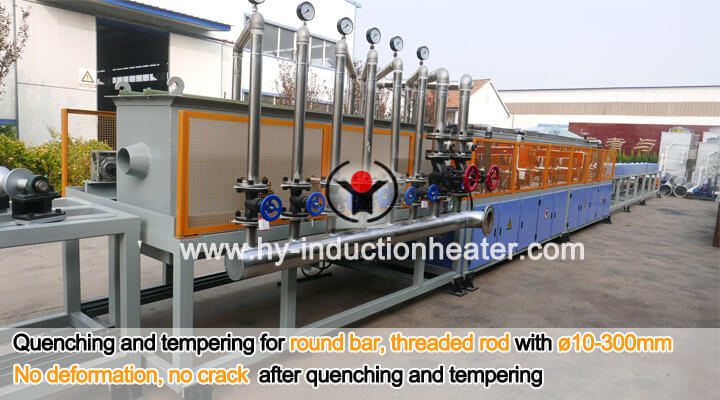In order to improve its surface hardening equipment, fatigue resistance and other properties, metal steel will choose to be quenched by heat treatment, but there are often some factors affecting the final heat treatment efficiency, resulting in cracks on the surface of metal steel, resulting in substandard performance. Waste, etc.

Longitudinal cracks:
1. Inspection of non-metallic inclusions, banded structure, grain size, folding of forging or rolling streamlines of raw materials, material defects beyond the standard should not be further quenched, quenching cracks in the metallographic microstructure observation, there should be no decarbonization phenomenon on both sides of the crack.
2. By means of step isothermal quenching, the workpiece is not completely quenched to reduce the tangential fracture stress, or the oil can be quenched with water.
3. The size range of the sensitive zone to avoid cracking is usually 8? 15 mm for carbon steel and 25? 40 mm for low alloy steel.
Transverse cracks:
1. Part preheating, then heating to quenching temperature quenching, pre-cooling before quenching can reduce cracking.
2. Proper increase of quenching temperature and hardenability can reduce the formation of quenching cracks (suitable for high carbon steel parts).
3. Measures should be taken to reduce thermal stress and microstructure stress at the tip and groove of the parts and where the cooling is not uniform.
4. There must be no oxide spots on the parts. Uniform heating can prevent transverse cracks.
5. The holes in the induction quenched parts should be blocked to prevent overheating cracking around the holes.
Peeling crack:
1. Ensure that there is a certain transition zone between the Carburizing layer and the carbonitriding layer, that is, the diffusion is uniform, the hardness gradient or the carbon concentration gradient do not appear steep slope. It is found that this crack can be solved by diffusion treatment.
2. Induction heating quenched parts, should also ensure that there is a transitional zone.
Overseas manager: Tom Wang
Email:tom@foreverfurnace.com
Phone: 0086-13303078975(whatsapp, wechat,line)
Specialist of bar heat treatment furnace in China; Glad to be your business partner in induction heating field.
Post time: 04-25-2019





